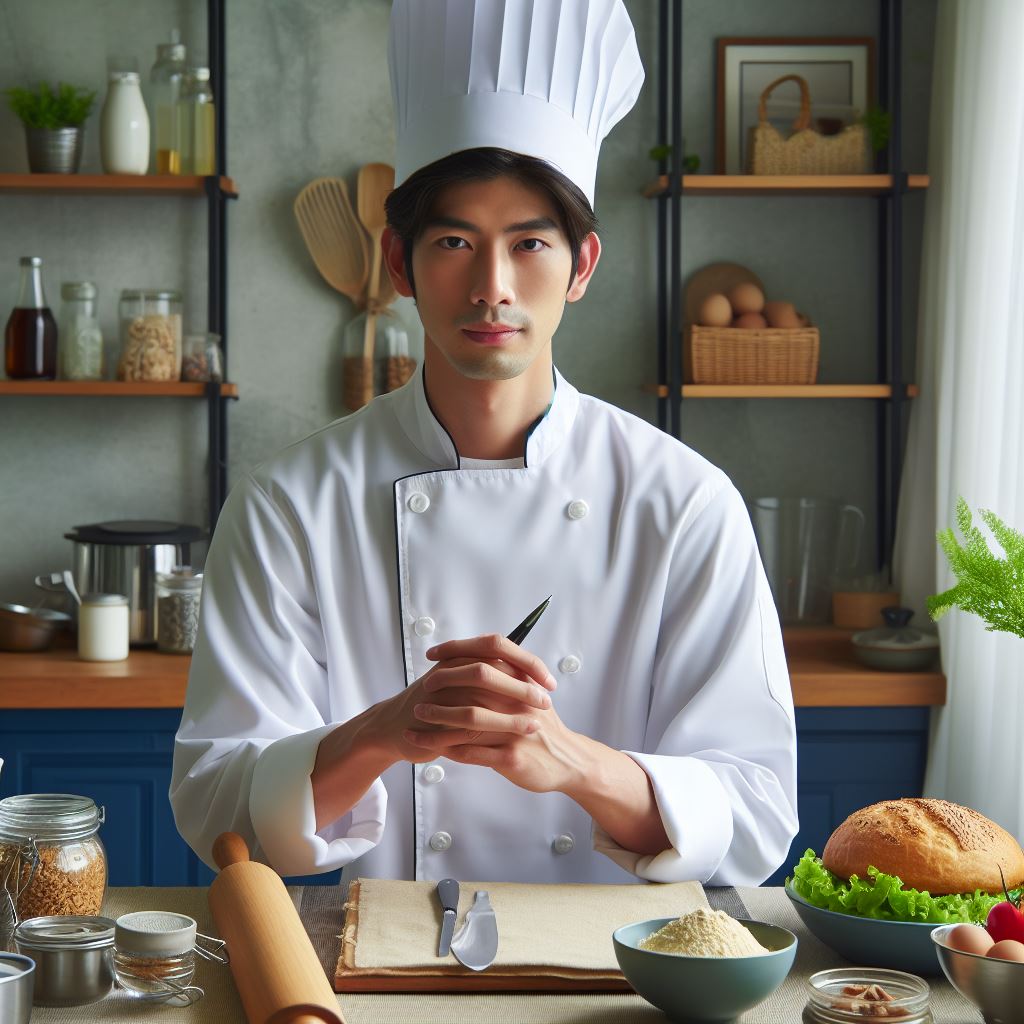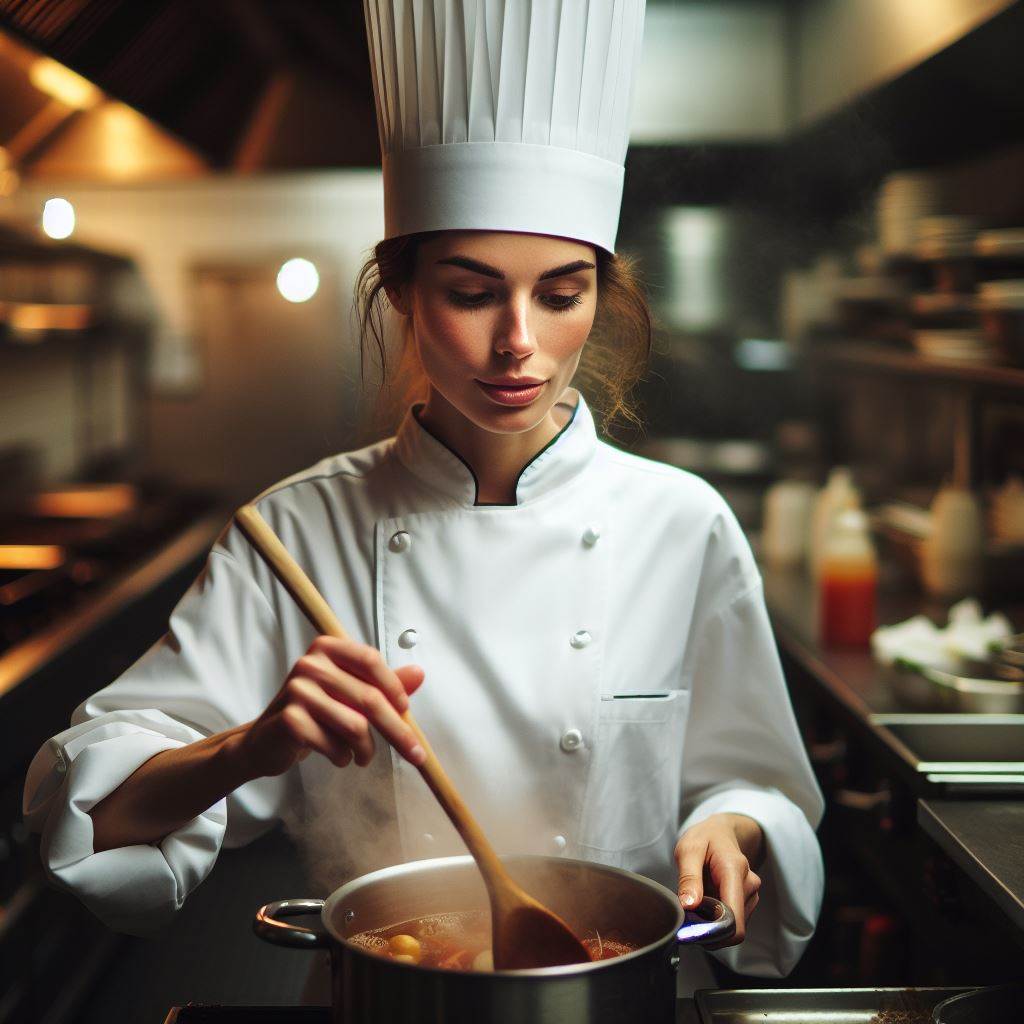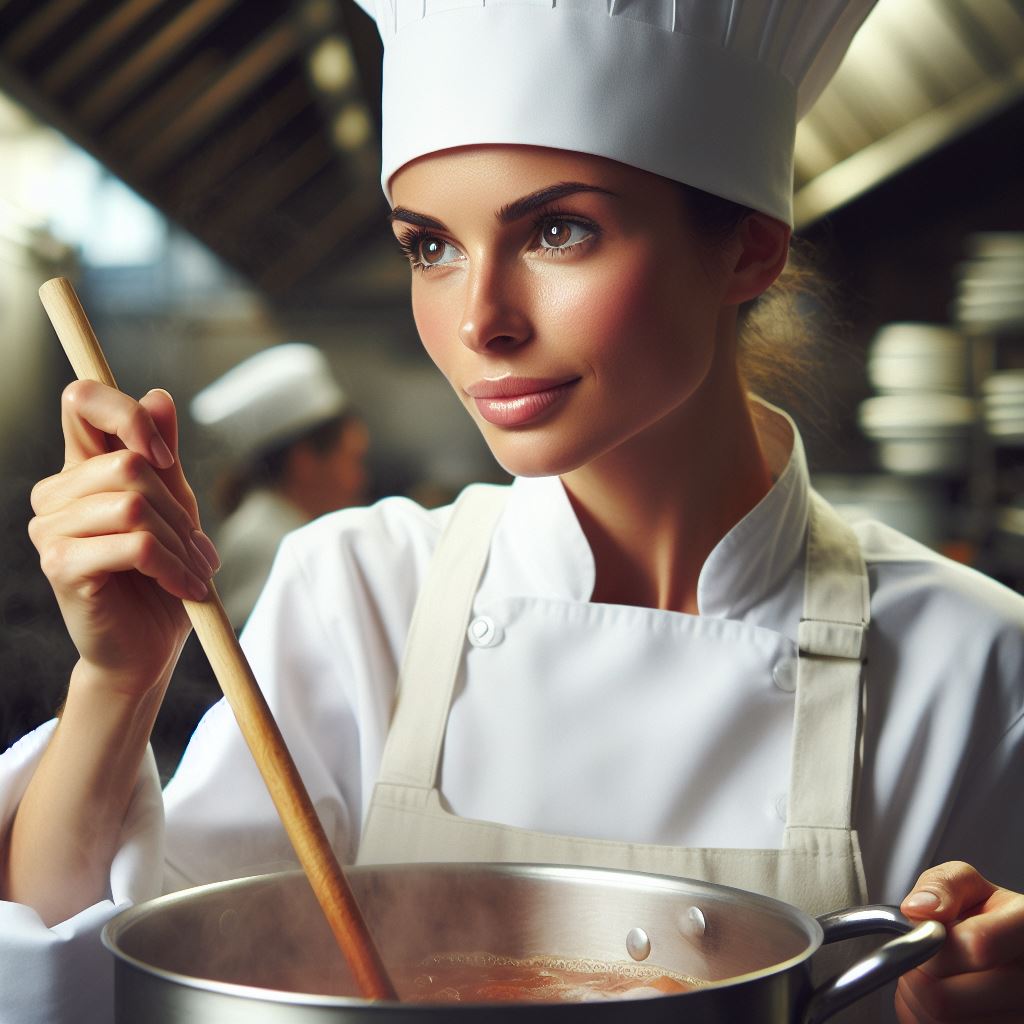Introduction
New Zealand’s local gastronomy is more than just food; it’s a vibrant tapestry woven from the land, sea, and cultural traditions.
From the rugged coastlines to the lush forests, every ingredient tells a story.
The importance of local gastronomy lies not only in satisfying hunger but also in celebrating identity and connecting generations.
Cooks are the heartbeat of local cuisine. They wield their ladles like magic wands, infusing dishes with memories and love.
Their hands knead dough, stir pots, and season stews, all while preserving ancestral techniques.
These culinary custodians ensure that flavors endure, passing down recipes whispered across generations.
In bustling kitchens and cozy eateries, cooks become storytellers.
They narrate the saga of kūmara (sweet potato) and paua (abalone), of hāngī (earth oven) feasts and hāngī pies.
Their creations bridge the past and present, inviting locals and visitors alike to taste the essence of New Zealand.
As we embark on this gastronomic journey, let us celebrate the cooks—the guardians of tradition, the alchemists of flavor.
Their aprons hold secrets, and their spatulas wield heritage.
Through their craft, they preserve New Zealand’s soul, one plate at a time.
Brief Overview of New Zealand Cuisine
Traditional Māori cuisine and its influences
Māori cuisine, known as “hangi,” is deeply rooted in the cultural traditions of the indigenous Māori people.
It involves cooking food in an earth oven, or pit, using hot stones and layers of vegetation.
The cooking method imparts a unique smoky flavor to the food, and it is often accompanied by a variety of traditional dishes such as “rewena bread,” made from fermented potato or wheat, and “kai moana,” which includes seafood like shellfish and fish.
Personalized Career Consulting
Unlock your potential with expert career advice tailored to your goals. Get personalized guidance and actionable steps toward your dream career in New Zealand.
Get StartedOver the years, Māori cuisine has been influenced by European and Asian flavors, resulting in a wonderful fusion of traditional and modern ingredients and cooking techniques.
Fusion of European and Pacific Rim flavors in modern New Zealand dishes
Modern New Zealand cuisine is characterized by the fusion of European and Pacific Rim flavors, creating a unique culinary experience.
European settlers brought with them ingredients and cooking techniques that shaped the development of New Zealand cuisine.
Pacific Rim flavors from neighboring countries, such as Polynesia and Asia, further enhanced the culinary landscape.
The combination of these influences has resulted in dishes like pavlova, a meringue-based dessert topped with fresh fruits, and “hāngī pizza,” which takes the traditional Māori cooking method and applies it to a classic Italian dish.
This fusion of flavors has allowed New Zealand chefs to experiment with diverse ingredient combinations, resulting in dishes that are both comforting and innovative.
The use of fresh, local ingredients in NZ gastronomy
New Zealand’s rich natural resources and agricultural heritage play a significant role in the country’s gastronomy.
With its fertile lands and abundant coastline, New Zealand prides itself on the use of fresh, local ingredients in its cuisine.
Fresh seafood, including crayfish, mussels, and paua (abalone), is a popular choice among locals and visitors alike.
The country is also known for its high-quality lamb, beef, and dairy products, which feature prominently in many New Zealand dishes.
In addition to the natural ingredients, New Zealand’s lush landscapes provide a variety of fruits, vegetables, and herbs that add vibrant flavors to the cuisine.
The emphasis on fresh, local ingredients not only ensures the quality and taste of the food but also supports sustainable practices and local producers.
Read: Sustainable Cooking in NZ’s Tourism
The Crucial Role of Cooks in Local Gastronomy
How local cooks contribute to preserving cultural food traditions
Local cooks play a crucial role in preserving cultural food traditions through their recipes and cooking techniques.
Transform Your Career with a Professional CV and Cover Letter
Stand out to employers with an ATS-optimized resume and tailored cover letter designed to match your dream role. Let us craft your job application materials for success!
Get StartedThey possess deep knowledge and understanding of traditional ingredients and flavors.
Cooks ensure that traditional recipes are passed down through generations, keeping the heritage alive.
They contribute to the sustainability of local food systems, supporting local farmers and producers.
Cooks also take part in culinary events and festivals, showcasing traditional dishes to a wider audience.
The creativity and innovation of chefs in incorporating international flavors into local dishes
Chefs constantly push the boundaries of local gastronomy by incorporating international flavors.
They experiment with new ingredients and techniques to create unique fusion dishes.
Creative chefs blend different culinary traditions, resulting in innovative and exciting flavor combinations.
By infusing international elements into local dishes, chefs attract a diverse range of diners.
This culinary innovation keeps local gastronomy vibrant and relevant in a global context.
Chefs’ contribution to promoting New Zealand’s culinary identity
Chefs play a significant role in promoting New Zealand’s culinary identity on the global stage.
They serve as ambassadors, introducing the world to the unique flavors of New Zealand.
Through their creativity and skill, chefs elevate local ingredients to new heights.
They showcase the abundance of fresh seafood, high-quality meats, and seasonal produce.
Chefs also collaborate with local producers, creating a network that supports the entire food industry.
Boost Your Career with a Standout LinkedIn Profile
Attract recruiters and expand your network with a fully optimized LinkedIn profile tailored to highlight your strengths and professional goals. Let your profile open doors to new opportunities!
Get OptimizedThe recognition received by renowned chefs further enhances New Zealand’s culinary reputation.
In essence, local cooks play an indispensable role in preserving cultural food traditions, promoting culinary innovation, and showcasing New Zealand’s unique culinary identity.
Their deep knowledge, creativity, and collaboration contribute to the richness and diversity of the local gastronomy.
From keeping traditional recipes alive to incorporating international flavors, chefs ensure that New Zealand’s culinary scene continues to thrive and captivate both locals and visitors.
Read: Farm to Table: NZ Chefs Leading the Way
Profiles of Renowned New Zealand Cooks
Annabel Langbein – Brief Background, Notable Achievements, and Signature Dishes
Annabel Langbein, a prominent New Zealand cook, is known for her passion for food and cooking.
She grew up in a rural area surrounded by nature, inspiring her love for fresh, local ingredients.
Langbein’s notable achievements include publishing several best-selling cookbooks that showcase her innovative and accessible recipes.
She also hosts her own television shows, where she shares her culinary expertise with viewers from all over the world.
One of Langbein’s signature dishes is her mouthwatering honey-glazed duck.
Using a blend of local honey, soy sauce, and ginger, she creates a sticky glaze that perfectly complements the tender duck meat.
Langbein encourages home cooks to experiment with flavors and adapt her recipes to suit their preferences, making them accessible to all.
Ben Bayly – Brief Background, Notable Achievements, and Signature Dishes
Ben Bayly, a highly acclaimed New Zealand chef, has made a name for himself in the culinary world.
With a passion for fine dining and a commitment to showcasing local produce, Bayly has earned numerous accolades throughout his career.
Having worked in prestigious establishments both in New Zealand and abroad, Bayly brings a wealth of expertise to his craft.
One of Bayly’s signature dishes is his remarkable slow-cooked lamb shoulder.
Using traditional cooking methods, he creates a tender and flavorful dish that highlights the natural flavors of the meat.
Accompanied by seasonal vegetables and a rich jus, Bayly’s lamb shoulder exemplifies his dedication to creating exquisite, locally-inspired cuisine.
Peter Gordon – Brief Background, Notable Achievements, and Signature Dishes
Peter Gordon, a pioneering New Zealand-born chef, has made significant contributions to the culinary world with his fusion cuisine.
Gordon’s unique style combines flavors and ingredients from around the globe, resulting in delicious and innovative dishes.
His background includes working in renowned restaurants and owning his own establishments, where he continues to push culinary boundaries.
One of Gordon’s signature dishes is his iconic miso-marinated salmon.
By infusing fresh New Zealand salmon with Japanese-inspired flavors, he creates a dish that beautifully melds different culinary traditions.
Gordon’s creativity and skill in blending diverse ingredients are evident in this delectable and visually stunning creation.
In New Zealand’s gastronomic scene, these renowned cooks – Annabel Langbein, Ben Bayly, and Peter Gordon – have left an indelible mark.
Through their culinary expertise, they have showcased the richness of local produce and inspired both home cooks and professionals alike.
Their diverse backgrounds, notable achievements, and signature dishes exemplify the creativity and innovation prevalent in New Zealand’s food culture.
Read: Cruise Ship Cooking: A NZ Chef’s Tale

Popular Local Dishes and Recipes
Traditional Māori delicacies like hangi and boil-up
Māori cuisine is rich in unique flavors and traditional delicacies, offering a glimpse into New Zealand’s indigenous culture.
One such delicacy is hangi, a method of cooking where food is placed in a pit with heated stones, covered, and left to cook slowly.
The result is tender and smoky meat, accompanied by aromatic vegetables like kumara (sweet potato), potatoes, and pumpkin.
Another traditional Māori dish is boil-up, a hearty soup consisting of pork bones or beef, root vegetables, such as carrots and potatoes, and the addition of dumplings.
Boil-up is not only a comforting dish, but it also reflects the resourcefulness and resilience of the Māori people.
Introduction to iconic New Zealand dishes such as pavlova and hokey pokey
New Zealand has its own culinary icons that have become internationally recognized.
One of these is pavlova, a dessert renowned for its light and crisp meringue base, topped with fresh whipped cream and a variety of seasonal fruits.
The combination of textures and flavors makes pavlova a delightful treat loved by both locals and visitors.
Hokey pokey is another quintessential New Zealand treat loved by many.
It is a type of ice cream that contains small, sweet, and crunchy honeycomb toffee pieces.
The contrast between the smooth ice cream and the caramelized honeycomb creates a delightful indulgence.
Guidelines for preparing some local dishes at home
If you want to experience the taste of New Zealand at home, here are a couple of delicious recipes you can try:
Hangi
- Ingredients: Meat of your choice (e.g., chicken, lamb, pork), kumara (sweet potato), potatoes, pumpkin, cabbage, and any other desired vegetables and seasoning.
- Instructions: Dig a hole in your backyard and line it with rocks. Start a fire in the hole, allowing the rocks to heat up.
Once the rocks are hot, layer them with the meat and vegetables wrapped in aluminum foil. Cover the entire pit with wet sacks. Leave it to cook for 3-4 hours. Once cooked, uncover and enjoy the flavors of the smoky hangi.
Pavlova
- Ingredients: 4 egg whites, 1 cup sugar, 1 teaspoon white vinegar, 1 teaspoon cornstarch, whipped cream, and a selection of fresh fruits.
- Instructions: Preheat your oven to 180°C. Beat the egg whites until soft peaks form, gradually adding sugar until stiff and glossy. Mix vinegar and cornstarch, folding it into the meringue mixture.
Shape the mixture into a circle on a lined baking tray. Bake for 1 hour or until crisp. Once cooled, top with whipped cream and fresh fruits.
By following these recipes, you can relish the taste of traditional Māori dishes and popular New Zealand creations, all within the comfort of your own kitchen.
Don’t miss the opportunity to tantalize your taste buds with these exceptional local flavors during your visit to New Zealand!
Read: Essential Skills for NZ’s Aspiring Chefs
Unique Regional Cuisine
Overview of distinctive culinary specialties from different regions in New Zealand
The Northland region offers a variety of seafood dishes, including fresh snapper cooked in a Māori hangi.
In Auckland, you can find a fusion of cuisines reflecting its multicultural population, such as Pacific Island-inspired dishes.
The Wellington region is known for its vibrant culinary scene, with cafes and restaurants offering innovative dishes using local ingredients.
In Canterbury, lamb is a popular ingredient, and you can savor delicious lamb roasts or lamb shanks.
Southland is famous for its Bluff oysters, a delicacy known for their unique flavor and texture.
The use of local ingredients in regional dishes
New Zealand takes great pride in using locally-sourced ingredients, which add freshness and authenticity to regional dishes.
In the Northland region, kūmara (a type of sweet potato) is often used in traditional Māori dishes.
Auckland’s cuisine features an abundance of seafood, including mussels, crayfish, and paua (abalone).
The Wellington region takes advantage of its rich agricultural areas, incorporating locally-grown produce like artisanal cheese, organic vegetables, and free-range meats.
Canterbury’s farmers provide premium quality lamb, as well as fruits like apples and stone fruits, which are incorporated into various dishes.
Southland showcases the flavors of the ocean with its usage of local seafood like oysters, deep-sea fish, and shellfish.
Importance of regional gastronomy in showcasing cultural diversity
New Zealand’s regional gastronomy plays a vital role in celebrating the country’s cultural diversity.
The traditional Māori cuisine found in Northland represents the indigenous culture and their connection to the land.
In Auckland, diverse culinary influences reflect the city’s multiculturalism, bringing together flavors from around the world.
The Wellington region’s culinary scene demonstrates the creativity and innovation of its talented chefs, showcasing the city’s artistic spirit.
Canterbury’s cuisine showcases the agricultural heritage of the region, emphasizing the close bond between farmers and chefs.
Southland’s gastronomy highlights the coastal lifestyle of the area, showcasing the importance of seafood in local culture.
Overall, exploring the unique regional cuisine in New Zealand allows visitors to immerse themselves in a gastronomic journey that reflects the country’s diverse landscapes, cultures, and culinary traditions.
Conclusion
Cooks play a pivotal role in preserving and promoting New Zealand’s local culinary traditions.
Their dedication to using fresh, seasonal ingredients ensures that the flavors of New Zealand are authentically represented on every plate.
Embark on a gastronomic journey through New Zealand’s diverse food scene.
From hearty lamb dishes to delicate seafood, each bite tells a story of the land and its people.
Don’t miss the chance to taste kaimoana (seafood) straight from the ocean or indulge in a traditional hangi (earth oven-cooked feast).
As we bid adieu to this culinary odyssey, let us celebrate the rich heritage that flavors our memories.
New Zealand’s cuisine is more than sustenance; it’s a cultural tapestry woven with passion, innovation, and love.
So raise your glass to the cooks who keep the fire burning and the flavors alive.




